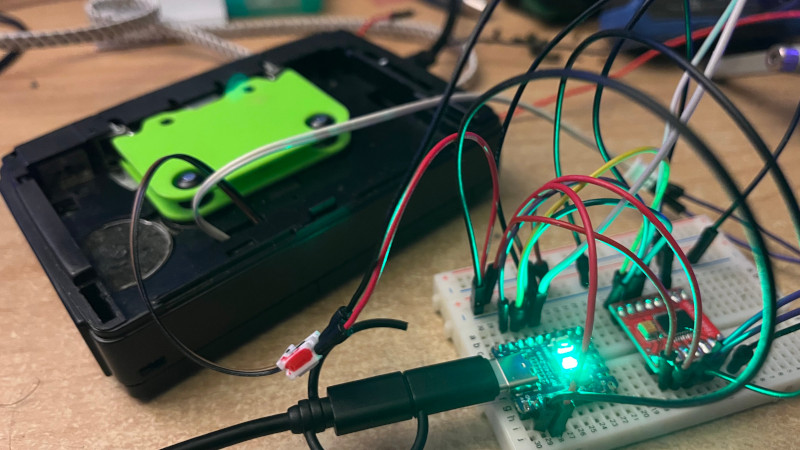Red vs Blue vs Purple: The Colorful World of Cybersecurity
If you’ve been hanging around the cybersecurity world (or just scrolling through tech Twitter), you’ve probably heard the terms Blue Team, Red Team, and Purple Team thrown around. Sounds like a game of paintball, right? These “teams” represent different mindsets and roles within cybersecurity—and understanding how they work together is key to building strong, resilient systems. Blue Team: The Defenders Think of them as the guardians of the network. The Blue Team is all about defense. Their mission is to protect systems, data, and infrastructure from malicious actors. This is your SOC (Security Operations Center) crew, your incident responders, and security engineers who monitor, detect, and neutralize threats in real-time. These are the things they do Monitor network traffic and logs Hunt for threats proactively Patch vulnerabilities Respond to security incidents Build firewalls, antivirus systems, and access controls If your app were a castle, the Blue Team is the wall, moat, archers, and boiling oil. Red Team: The Attackers (But Friendly!) The Red Team plays the role of the enemy—but they’re actually the good guys. These folks simulate real-world cyberattacks to find weaknesses in your defenses before the bad actors do. These are the things they perform Penetration testing Social engineering Exploit development Physical security testing The Red Team asks: “If I were a hacker, how would I break this?” Their goal isn’t destruction—it’s discovery. They want to help you spot the cracks before a real attacker does. Purple Team: The Bridge Builders The Purple Team isn’t a separate team with its own methods—it’s more of a philosophy or collaborative mindset. Their goal is to facilitate communication between Red and Blue teams, making sure everyone learns and improves from each operation. They perform the following Analyze Red Team findings with the Blue Team Automate detection and response based on attacks Build shared tools and workflows Ensure knowledge transfer between offense and defense Think of the Purple Team as a security translator—turning attacks into lessons and defenses into smarter systems. How purple team makes a difference Many companies make the mistake of siloing security—one team attacks, another defends, and they never really talk. The Purple Team model fixes that by creating a feedback loop. Red Team exposes weaknesses → Blue Team learns and adapts → next test is harder → security posture improves over time. This kind of continuous improvement is exactly what modern security needs in a world of fast-moving threats. Wrapping up If you are new to cybersecurity, we will eventually come to know that Cybersecurity isn’t just about firewalls and passwords. It’s an area creativity, teamwork, and strategy win the day. By understanding the roles of the Blue, Red, and Purple Teams—and fostering a culture of collaboration—you build not just a secure system, but a smarter one. If you're a software developer who enjoys exploring different technologies and techniques like this one, check out LiveAPI. It’s a super-convenient tool that lets you generate interactive API docs instantly. So, if you’re working with a codebase that lacks documentation, just use LiveAPI to generate it and save time! You can instantly try it out here!

If you’ve been hanging around the cybersecurity world (or just scrolling through tech Twitter), you’ve probably heard the terms Blue Team, Red Team, and Purple Team thrown around. Sounds like a game of paintball, right?
These “teams” represent different mindsets and roles within cybersecurity—and understanding how they work together is key to building strong, resilient systems.
Blue Team: The Defenders
Think of them as the guardians of the network.
The Blue Team is all about defense. Their mission is to protect systems, data, and infrastructure from malicious actors. This is your SOC (Security Operations Center) crew, your incident responders, and security engineers who monitor, detect, and neutralize threats in real-time.
These are the things they do
- Monitor network traffic and logs
- Hunt for threats proactively
- Patch vulnerabilities
- Respond to security incidents
- Build firewalls, antivirus systems, and access controls
If your app were a castle, the Blue Team is the wall, moat, archers, and boiling oil.
Red Team: The Attackers (But Friendly!)
The Red Team plays the role of the enemy—but they’re actually the good guys. These folks simulate real-world cyberattacks to find weaknesses in your defenses before the bad actors do.
These are the things they perform
- Penetration testing
- Social engineering
- Exploit development
- Physical security testing
The Red Team asks: “If I were a hacker, how would I break this?”
Their goal isn’t destruction—it’s discovery. They want to help you spot the cracks before a real attacker does.
Purple Team: The Bridge Builders
The Purple Team isn’t a separate team with its own methods—it’s more of a philosophy or collaborative mindset. Their goal is to facilitate communication between Red and Blue teams, making sure everyone learns and improves from each operation.
They perform the following
- Analyze Red Team findings with the Blue Team
- Automate detection and response based on attacks
- Build shared tools and workflows
- Ensure knowledge transfer between offense and defense
Think of the Purple Team as a security translator—turning attacks into lessons and defenses into smarter systems.
How purple team makes a difference
Many companies make the mistake of siloing security—one team attacks, another defends, and they never really talk. The Purple Team model fixes that by creating a feedback loop.
Red Team exposes weaknesses → Blue Team learns and adapts → next test is harder → security posture improves over time.
This kind of continuous improvement is exactly what modern security needs in a world of fast-moving threats.
Wrapping up
If you are new to cybersecurity, we will eventually come to know that
Cybersecurity isn’t just about firewalls and passwords. It’s an area creativity, teamwork, and strategy win the day.
By understanding the roles of the Blue, Red, and Purple Teams—and fostering a culture of collaboration—you build not just a secure system, but a smarter one.
If you're a software developer who enjoys exploring different technologies and techniques like this one, check out LiveAPI. It’s a super-convenient tool that lets you generate interactive API docs instantly.
So, if you’re working with a codebase that lacks documentation, just use LiveAPI to generate it and save time!
You can instantly try it out here!








































































































































































![[The AI Show Episode 142]: ChatGPT’s New Image Generator, Studio Ghibli Craze and Backlash, Gemini 2.5, OpenAI Academy, 4o Updates, Vibe Marketing & xAI Acquires X](https://www.marketingaiinstitute.com/hubfs/ep%20142%20cover.png)
































































































































![From drop-out to software architect with Jason Lengstorf [Podcast #167]](https://cdn.hashnode.com/res/hashnode/image/upload/v1743796461357/f3d19cd7-e6f5-4d7c-8bfc-eb974bc8da68.png?#)














































































































(1).jpg?width=1920&height=1920&fit=bounds&quality=80&format=jpg&auto=webp#)


















![New iOS 19 Leak Allegedly Reveals Updated Icons, Floating Tab Bar, More [Video]](https://www.iclarified.com/images/news/96958/96958/96958-640.jpg)











_NicoElNino_Alamy.png?#)
.webp?#)
.webp?#)





































































































![Apple to Source More iPhones From India to Offset China Tariff Costs [Report]](https://www.iclarified.com/images/news/96954/96954/96954-640.jpg)
![Blackmagic Design Unveils DaVinci Resolve 20 With Over 100 New Features and AI Tools [Video]](https://www.iclarified.com/images/news/96951/96951/96951-640.jpg)
































































































































